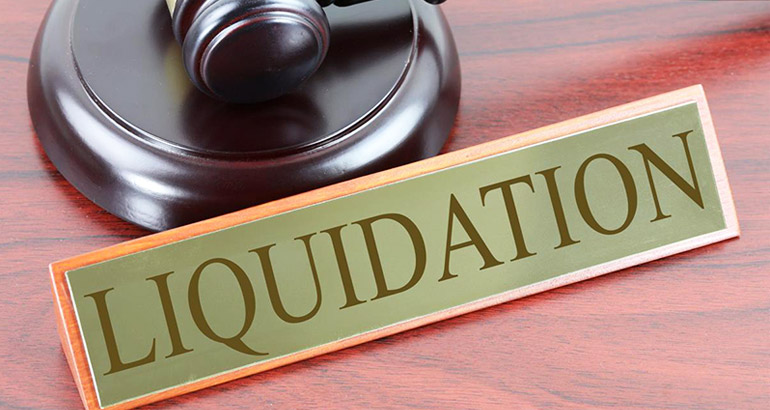Not known Details About Company Liquidation
Not known Details About Company Liquidation
Blog Article
See This Report on Company Liquidation
Table of ContentsThe Basic Principles Of Company Liquidation How Company Liquidation can Save You Time, Stress, and Money.Fascination About Company LiquidationGetting My Company Liquidation To Work9 Simple Techniques For Company Liquidation
A liquidator is particularly assigned to look after the winding up of a firm's affairs in order for it to be closed down commonly when the firm is declaring bankruptcy. The liquidator is a neutral 3rd party that supervises the sale of firm assets in order to repay any kind of superior financial debts.Their function includes, yet is not restricted to: Neutral Movie director: A liquidator is charged with acting as an impartial 3rd party to manage the whole firm liquidation process. Create Statement of Matters: Liquidators need to create a comprehensive declaration of events document. This document is dispersed to lenders, outlining the current economic standing of the service at the time of its liquidation.
After the liquidation of a company, its presence is eliminated from Companies Residence and it stops to be a legal entity. If supervisors navigated the procedure uncreative, there would certainly be no charges or personal responsibility for firm financial debts expected. Currently, with a clean slate, supervisors can check out brand-new company possibilities, though professional assessment is suggested.
An Unbiased View of Company Liquidation
If more than 90% of all business investors concur, liquidation can take place on short notification within 7 days, the minimal statutory notice for lenders. Normally, the larger the liquidation and the even more properties and funding the company has, the longer the process will take. 'Do I have to pay to liquidate my business?', the response will depend on whether your service has any kind of properties remaining when selling off.

We recognize that no 2 firms are the very same, which is why we will certainly put in the time to obtain to recognize your organization so we can advise the ideal training course of activity for you. We just work in your best interests, so you can be completely confident in the solution we supply.
Some Known Details About Company Liquidation
In the UK, there is an established process to shutting down or restructuring a limited firm, whether it is solvent or financially troubled. This procedure is recognized as liquidation and can only be taken care of by a licensed bankruptcy specialist (IP) based on the Insolvency Act 1986. There are 4 primary kinds of business liquidation procedure: Creditors' Volunteer Liquidation (CVL); Mandatory liquidation; Management; and Members' Volunteer Liquidation (MVL).

In these scenarios, it is very important that the firm stops trading; if business proceeds to trade, the directors could be held directly liable and it can result in the insolvency specialist reporting wrongful trading, called misfeasance, which may bring about legal activity. The directors select a bankruptcy professional and when this has been agreed and verified, there is a meeting with the shareholders.
Naturally, if there are no investors, this action of the procedure is not required (Company Liquidation). The IP takes control of the firm and begins the company liquidation process. The directors are no more included in what takes place, including browse around these guys the sale of the business's properties. Nonetheless, if the directors want any of the assets, they can inform the IP.
Company Liquidation Fundamentals Explained
The major distinction is that the company's lenders put on the court for a winding up order which requires the financially troubled company right into a liquidation procedure. For the most part, financial institutions take this action as a last hope due to the fact that they have not obtained settlement via other forms of negotiation. The court assigns an insolvency practitioner, additionally referred to as an official receiver, to perform the mandatory firm liquidation process.
This kind of business liquidation is not voluntary and directors' conduct is reported to the UK's Assistant of State once the liquidation process has actually her comment is here been completed. Therefore, any kind of supervisor that falls short to accept the IP or has actually been included in supervisor misconduct, or an illegal act, may result in severe repercussions (Company Liquidation).
It is used as a means to protect the business from any type of lawsuit by its lenders. The supervisors of the company consent to make normal payments to settle their financial debts over a period of time. The designated manager deals with the voluntary management procedure, and receives the payments which they then distribute to lenders according to the concurred quantities.
Unknown Facts About Company Liquidation
This provides the company with time to develop a plan going onward to save the business and prevent liquidation. However, now, directors hand control of the company over to the appointed manager. If a firm is solvent however the directors and investors desire to close business, a Members Volunteer Liquidation is the right alternative.
The business liquidation process is taken care of by a liquidator designated by the directors and shareholders of the firm and they should find sign an affirmation that there are no lenders remaining. The liquidation procedure for an MVL resembles that of a CVL in that properties are know but the profits are distributed to the supervisors and the investors of the business after the liquidator's costs have been paid.
Report this page